40 years of Macintosh
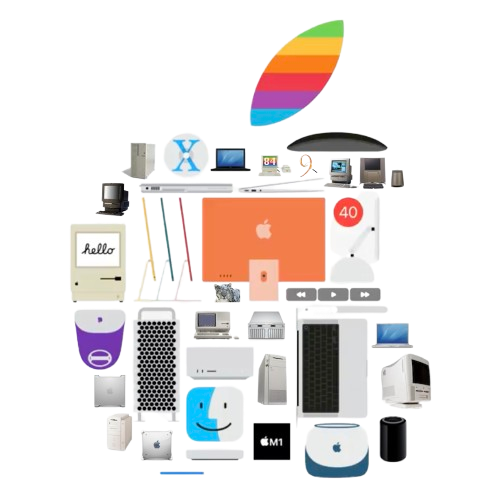
The first Apple Macintosh computer was released 40 years ago (January 24, 1984) following an epic 1984 Super Bowl commercial two days earlier.
As the first mass-market all-in-one computer with a graphical desktop and mouse navigation, the Macintosh (and the Macintosh brand in general) was positioned to be the computer for everyone.
40 years later, the “Mac” is a household name and Apple is the world’s richest company by market cap. But the Mac isn’t just a computer, it’s essentially Apple’s whole line of business. iPhones and iPads run a version of the same macOS UNIX operating system you’ll find on your MacBook, iMac, Mac Mini, Mac Studio, or Mac Pro. Ditto for the Apple Watch and Visio Pro, and likely every future product that Apple releases.
In this post, I’ll give you a concise-but-detailed history of how personal computing started, and how Apple and the Macintosh evolved over the past 40 years.
Strap in, because it’s going to be a wild ride with plenty of information and perspective!
Before Personal Computers
Personal computing began in the 1970s. Nearly all computers in the early 1970s were either large mainframe computers used primarily for business, or minicomputers that had a wide variety of uses in business, education, science, and engineering. Minicomputers, like the DEC PDP-11 shown below, were anything but mini – they were quite massive, incredibly expensive, and not something you’d see in someone’s home. They were not personal computers.
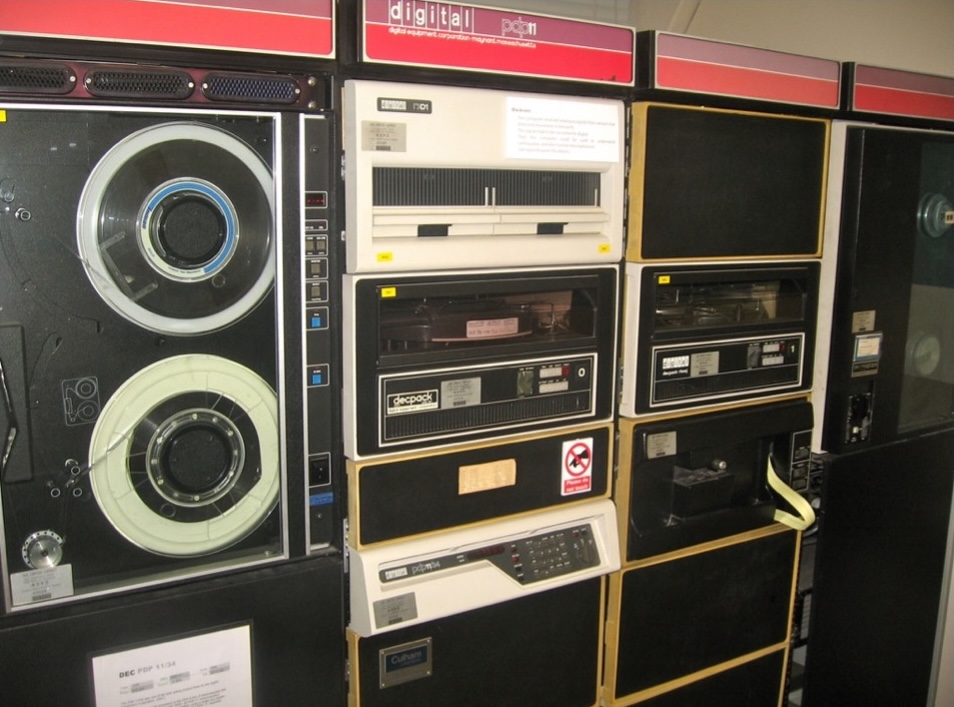
Early Personal Computers
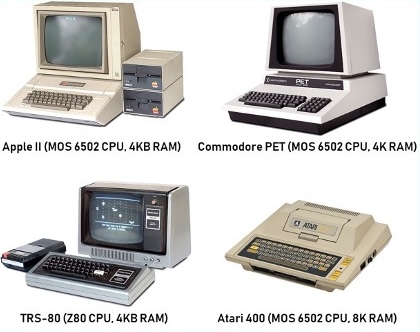
By the mid-1970s, computer memory (also called Random Access Memory, or RAM) started to come down in price, and inexpensive all-in-one computer processing units that could perform most computer functions on a single computer chip started appearing on the market for the first time, including the Intel 8080, Motorola 6800, and MOS 6502. These microprocessors (also called Central Processing Units, or CPUs) are what allowed computer manufacturers to create inexpensive personal computers (PCs) during the late 1970s.
So, what was the first PC? That’s difficult to answer since many companies started making PCs as soon as microprocessors became available. Some companies sold computer kits that needed to be assembled by someone with soldering ability, while others produced polished commercial products. It’s more accurate to say there were several companies in the late 1970s that brought PCs to market, including MITS, IMSAI, Tandy Radio Shack (TRS), Commodore, Atari, and Apple Computer. The four most popular PCs of this era were the Apple II, Commodore PET, Tandy TRS-80, and Atari 400.
Early Apple
The Apple II was Apple Computer’s first commercial product. Yes, there was an Apple I, but it was simply a computer kit that Steve Wozniak built to demonstrate his ability to build a computer to fellow computer hobbyists.
So, who is Steve Wozniak? Steve Wozniak (nicknamed “the Woz” by those of us in technical fields) is the co-founder of Apple Computer, and the technical genius who designed the Apple I – a computer he later refined and improved to create the Apple II.
The other Steve associated with Apple (Steve Jobs) was Steve Wozniak’s friend who had just enough technical knowledge to be a sales guy. While many people have labelled Steve Jobs as a computer visionary, that’s tremendously exaggerated – especially in the early days of Apple. In September 2016, during a presentation I attended at Lot42 in Kitchener, Ontario, Canada, Steve Wozniak said that Steve Jobs couldn’t visualize how computers would change the world in the future, and that he had to work hard to convince him of that. He also said that Steve Jobs’ goal was to make money, not change the world.
Thus, Apple Computer was founded by two Steves. Technically, there was a third founder (Ronald Wayne), but he left two weeks afterwards and never contributed to the success of Apple Computer.
Unfortunately, neither Steve had the money to start a successful computer company. That’s where multimillionaire Mike Markkula comes into the picture. Markkula was an experienced businessman who invested $250,000 into Apple Computer and drove the business side of things to make it successful. His strategy was to price the Apple II well above the competition at the time, thus providing a larger profit margin. This profit margin allowed Apple Computer to spend a lot more on marketing and cosmetic features like the computer case. Markkula thought that people would be willing to spend more for a computer if it looked good and was marketed aggressively.
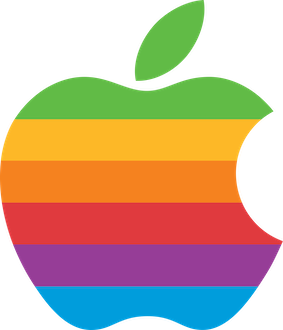
The Apple II boasted a very sturdy build, multiple expansion ports, and the ability to output color text to the video display. The ability to display color was not common in early PCs of the 1970s. As a result, Apple Computer chose a rainbow logo to advertise the color capabilities of the Apple II.
Together with an aggressive marketing strategy, the Apple II made its way into nearly every industry in a short period of time. The Visicalc spreadsheet program made the Apple II a great business tool, its ease of use made it extremely popular in the school system, and its expandability and BASIC interpreter attracted hackers, engineers, scientists, and mathematicians. The first demonstration of public key cryptography was hacked together by a few mathematicians on an Apple II.
While the Apple II was a great PC, it was also very expensive compared to other PCs at the time. It enjoyed success in business, libraries, and schools, but few families could afford one. In fact, I didn’t know anyone in the 1970s or 1980s that had an Apple II at home. However, I can rhyme off over a hundred people I knew during that time who had a family Commodore, TRS, or Atari computer. The Commodore 64 was far more powerful than the Apple II at a fraction of the cost, and today remains the #1 best-selling computer model of all time.
Regardless, the Apple II was Apple Computer’s bread and butter for well over a decade. Its early success led to a massive library of available software programs on the market, and this in turn gave the Apple II a very long lifespan. In fact, Apple IIs were manufactured and sold from 1977 to 1993.
The Beginning of Macintosh
After viewing the latest graphical technology at the Palo Alto Research Center (PARC), Apple Computer focused much of its research and development on creating a computer that had a mouse and Graphical User Interface (GUI). The first attempt at this was the Apple Lisa in 1983 (later renamed the Macintosh XL), which used the advanced Motorola 68000 CPU. Due to its high cost ($10,000 US) and sparse software support, the Lisa was a commercial failure. During the creation of the Apple Lisa, Steve Jobs led a secret research team off company premises that eventually led to the creation of the Macintosh computer in 1984. In addition to having a faster Motorola 68000 CPU than the Apple Lisa, the Macintosh shipped with Mac OS, which had a GUI desktop similar to the desktop you’d find on modern OSes today. It was quite revolutionary at the time it was introduced. Since Steve Jobs considered each Macintosh a work of art, the insides of early Macintosh cases were molded with the signatures of each person who worked on the Macintosh team.
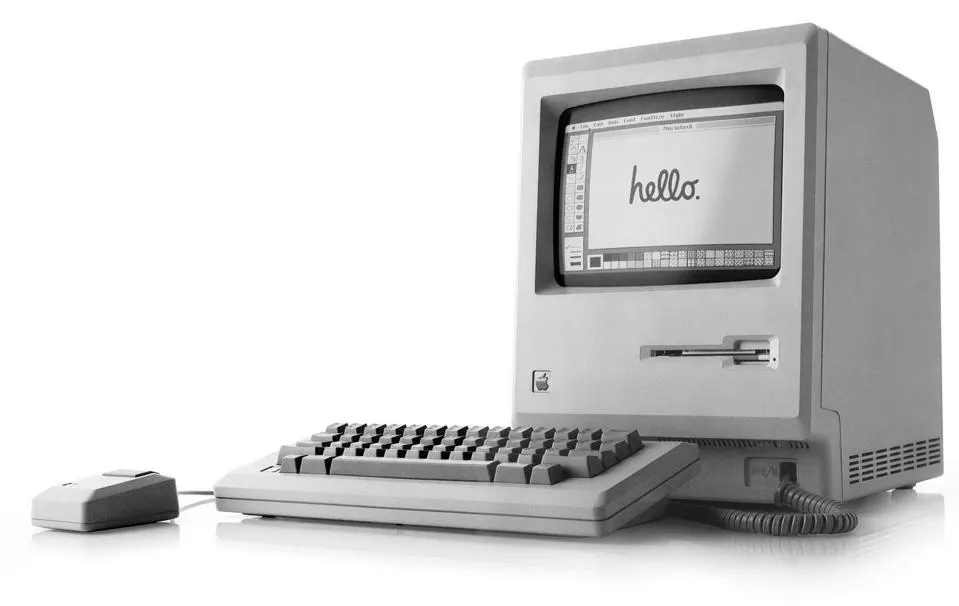
But there was a problem. The Macintosh sold poorly. At $2,500 US in 1984, it was just too expensive. Luckily, the Apple II kept money flowing in until the Macintosh (or Mac) picked up steam in the late 1980s. But, even in the late 1980s, the Mac didn’t infiltrate every market like the Apple II did. Instead, the Mac was primarily used in two markets:
- Education, where Apple Computer had a strong presence because of the Apple II, and,
- Desktop publishing, where a GUI was considered valuable for creating and editing content.
As Apple Computer grew, both Steves left the company. Steve Wozniak left in 1981 after becoming disenchanted with the large corporate culture and Steve Jobs was forced out in 1985 after senior management got tired of him being a jerk (a trait discussed in nearly every book about him).
After leaving Apple Computer, Steve Wozniak entered semi-retirement. He funded and ran a few music festivals, became a school teacher, and continues to give the occasional talk today. Steve Jobs, on the other hand, had no plans on settling down after getting booted out of Apple Computer. He formed another company designed to compete with Apple Computer called NeXT, and hired many of the people from the original Macintosh team to create the NeXT computer that launched in 1988. He also bought the Pixar computer animation company for which he served as CEO until 2006 when Pixar was bought by the Walt Disney company.

The NeXT Computer
The NeXT computer didn’t have revolutionary hardware specs whatsoever when it launched. Its 25MHz Motorola 68030 CPU was not considered high-end at the time. Plus, it was tremendously overpriced at $6,500 US. Worse yet, it didn’t even have a color display because that would have further increased the cost. What it did have was a cool looking case (it was a cube made entirely of magnesium alloy), as well as an excellent graphical OS called NeXTSTEP.
Remember those mainframes and minicomputers that existed before personal computers entered the picture? Many of those machines ran a UNIX OS.
By the 1980s, UNIX was considered the most powerful operating system in the world, and the basis for future computing. NeXTSTEP was a UNIX system. The core component of NeXTSTEP was called the Mach microkernel, and was considered revolutionary at the time.
Surprisingly, NeXTSTEP performed far better than anyone expected on the limited NeXT computer hardware. This is because NeXT computers offloaded a lot of processing (sound, video, network, input/output, etc.) to a large number of different computer chips on the NeXT computer’s motherboard, so that the Motorola 68030 CPU didn’t need to perform as much processing (a hardware design approach shared by mainframe computers). Better yet, NeXTSTEP boasted a polished GUI desktop and amazing object-oriented programming environment, including a tool called Interface Builder, that allowed you to create graphical programs very quickly using the Objective-C language.
As for scope, NeXT focused on creating UNIX workstations that were intended to rival Apple computers, but targeted to the higher education and science/engineering markets. Unfortunately, they failed. NeXT hardware was overpriced and underpowered compared to higher-end Reduced Instruction Set Computing (RISC) workstations available at the time from SUN Microsystems and Silicon Graphics Inc (SGI).
By 1994, they had stopped making their own computer hardware and shifted to selling NeXTSTEP (later called OPENSTEP ) alongside their objective-oriented development tools. They ported NeXTSTEP and these tools to run on Intel 486 PCs (that were widely-available at the time), as well as high-end SUN Microsystems SPARC and HP PA-RISC workstations.
I was at the University of Waterloo during this time, and used NeXTSTEP extensively, but not on NeXT hardware. The university purchased HP PA-RISC 712 workstations and installed copies of NeXTSTEP on them to perform software development. Universities didn’t care about NeXT hardware, but they loved NeXT software and development tools. Luckily, this kept NeXT afloat until they were purchased by Apple Computer a few years later.
Apple’s Hard Times and NeXT Acquisition
So what was Apple Computer doing in the late 1980s and early 1990s while NeXT was trying to be successful? Long story short: not much.
While Apple Computer raked in over $1 billion US in annual sales during most of the 1980s, the 1990s was a dismal decade for them. The IBM PC entered the market in 1981 and was cloned by dozens of manufacturers. By 1990 it was clear that the IBM PC was the standard in the personal computing market by a long shot. Apple computers were a distant second. Anything that was IBM-compatible became synonymous with PC, and a Mac was viewed by most as something else that wasn’t a PC – a weird relic from the 1980s. Apple Computer was essentially a big company advertising overpriced Macs and getting hammered by the PC competition, especially since the graphical features of Mac OS were fast becoming irrelevant during the rapid proliferation of Microsoft Windows.
Not many people I knew bought anything but PCs in the 1990s, even for desktop publishing. Macs were still common in the schools, but that loyalty was viewed as a strange by most. My university had a lab full of Power Macintosh 6100s, which came with a PowerPC processor to run Mac OS as well as an Intel 486 CPU to run Windows 3.11. It was as if Apple was saying “Yes, we know our OS sucks, so we’ll sell you an overpriced machine that can also run Windows 3.11 to make it useful. Just buy it please!” Not Apple’s finest moment.
By 1996, Apple was on the verge of bankruptcy. When asked about Apple Computer at the time, Michael Dell (founder of Dell) said “I’d shut it down and give the money back to the shareholders.” However, that didn’t happen. Instead, Steve Jobs returned to run Apple Computer the following year on the condition that they buy his failing company, NeXT. This was a good thing for both NeXT and Apple Computer. NeXT had great software development tools, but universities were getting wooed by Microsoft at the time, leaving NeXT with a shrinking revenue stream. And, of course, Apple Computer was in dire need of a new OS that didn’t suck, to replace their antiquated Mac OS.
But Apple Computer didn’t have much time. Steve Jobs told the press that “Apple is like a ship with a hole in the bottom, leaking water and my job is to get the ship pointed in the right direction.”
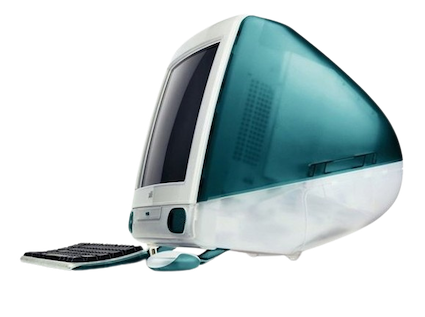
Apple’s First Saviour: The iMac
After returning to Apple, the first thing Steve Jobs did was cut their large product line to include only three product categories: a laptop, a desktop, and a high-end workstation.
The second thing he did was get the new computer that Apple Computer had been developing for the past few years to market as quickly as possible. This new computer was called the iMac.
The iMac all-in-one computer was Apple Computer’s saving grace during the late 1990s. It sold very well, largely because it was an all-in-one product that allowed people with little computer knowledge to get on the Internet. And most importantly, it wasn’t priced well above the competition at the time. By the end of 1998, Apple Computer wasn’t losing money anymore – they managed to turn a small profit for the first time in years.
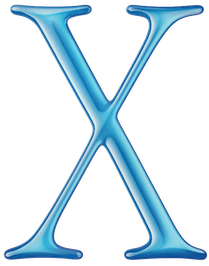
Apple’s Second Saviour: Mac OS X
Unfortunately, the iMac ran the antiquated Mac OS, which was subject to a lot of crashing, especially when using the Internet Explorer Web browser (widely considered the best Web browser at the time). Thus, focus shifted to getting NeXTSTEP ready as a replacement for Mac OS.
Keep in mind that Apple Computer was still a sinking ship at this time, and resources were tight. Creating an entirely new operating system based on NeXTSTEP would have been incredibly taxing, or even impossible at the time, without the help of the open source developer community. So Apple Computer open sourced the NeXTSTEP operating system to allow others to freely develop it. This new open source NeXTSTEP was called Darwin, and there were many NeXTSTEP developers in the academic community that were happy to help update the core NeXTSTEP OS. This, in turn, allowed Apple Computer to focus on creating the proprietary GUI desktop and application frameworks that they could add to Darwin and use as a replacement for Mac OS.
The end product was called Mac OS X, and was released in 2001. Mac OS X was fast and smooth but had a very limited set of applications when it was first released. To combat this, early versions of Mac OS X included a Classic Environment that allowed you to run programs written for older Mac OS within Mac OS X. As developers realized how easy it was to create graphical applications using Interface Builder and the NeXTSTEP developer tools (later called Xcode), applications for Mac OS X started to appear rather rapidly on the market, and the Classic Environment was eventually retired.

Apple’s Third Saviour: The iPod
The year 2001 was also when Apple Computer released the iPod digital music player that became hottest technology in the world for many years and made Apple a household name. The iPod (not the iMac) is what really put Apple Computer back into the game. Mac sales increased as a result, and people started to view Mac OS X as a much easier and secure (virus free) alternative to Windows XP. Mac computers were priced well above PCs, but the build quality was definitely there and made it worth it for people who were willing to spend the money. For example, my 2005 PowerBook G4 lasted me 12 years of incredibly heavy use (including being dropped dozens of times).
And the iPad gave Apple the money to bring many more new products to market.
Continuous Market Growth
For the next decade, Apple Computer brought new offerings to the table that impressed many of us who worked in technology-related fields. By 2006, Apple Computer was making $2.4 billion in profit annually and had some nice brand appeal. They switched their hardware from the PowerPC CPU platform to the Intel CPU platform that was standard in the industry without any issues, as they released tools that allowed developers to create applications that would work for both platforms.
In January 2007, they dropped Computer from their name and renamed themselves Apple. However, the biggest leap forward for Apple was in summer 2007, when they put a slimmed-down version of Mac OS X called iOS onto a phone with a touchscreen and called it the iPhone. It changed the smartphone paradigm and industry overnight, eventually replaced the iPod, and became the next cool thing (alongside the iPad tablet a few years later).
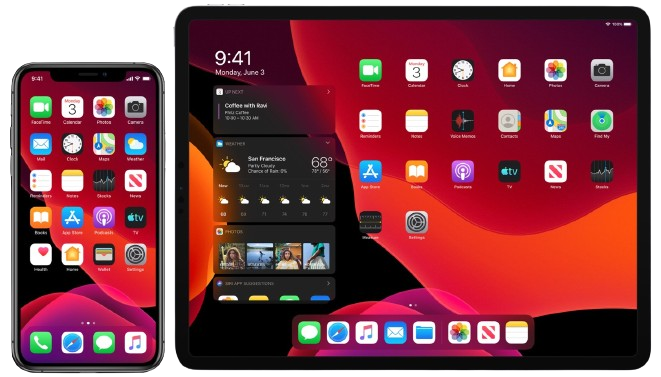
By 2011, Apple was making $16.6 billion in profit annually and this number was growing fast. While the iPod led to more Mac sales in the early 2000s, the iPhone led to tremendously more Mac sales after 2007. By 2011, if you wanted to look cool, forget the Nike shoes – you needed a Mac and an iPhone.
Unfortunately, only one person got credit for all of Apple’s success during this time: Steve Jobs. After his death in 2011, mainstream media, a big budget movie, and best-selling biography glorified Steve Jobs as the patron saint of Apple technology – the person who single-handedly brought every Apple product to market. While he deserves credit as a businessman for turning the company around in the late 1990s, it doesn’t take a genius to figure out that most products are the result of people with technical ability and vision. People like Steve Wozniak. Apple had a lot of talented-but-uncredited Steve Wozniaks, most of whom probably didn’t care much for Steve Jobs.
In 2012, Mac computers were still going strong, thanks to the iPhone and iPad, which paired nicely with other Apple products. These Macs were priced higher than PCs with similar specifications, but not outrageously so. Their solid build quality and OS easily justified the added cost. For anyone who was willing to pay more than the bare minimum for a computer, the Mac is what I recommended to others who asked my advice at the time.
Big Evil Corporation Phase
By 2013, Apple was massive and operating under a new leader who was focused on making as much profit as possible: Tim Cook. Tim knew Apple had the brand everyone wanted, and a loyal fan base that would buy whatever Apple put out onto the market. Apple’s phones got more expensive, and improvements didn’t WOW anyone when compared to the same improvements on Android phones.
In an attempt to encourage users to continue purchasing new iPhone models as they became available, Apple released updates that slowed down older iPhones, as well as sued small iPhone repair shops to discourage people from repairing their broken iPhone screens.
The quality and upgradability of their Mac computers also went down while prices remained dramatically higher than the competition. Keyboard problems, GPU issues and thermal throttling plagued MacBooks, and Apple decided to take steps to encourage users to continue purchasing new models instead of using their older model for longer. This included using proprietary screws to deter people from repairing internal components, as well as ensuring that components could not be upgraded by soldering them directly to the mainboard. To get more RAM or storage, you had to first purchase a model with more from Apple at a massive premium. The famous self-repair website ifixit.com gave most recent Macs a reparability score of 1 out of 10 (the worst reparability score). Any failed component on your mainboard meant that you had to purchase a new Mac as repair would be prohibitively expensive.
In 2018, an undercover CBC National documentary entitled Apple under fire for allegations of controversial business practices determined that Apple customers were regularly told that their Mac computers were not worth fixing, or charged exorbitant amounts for repairs, even when a minor repair could easily remedy the problem. They even interviewed Apple repair shops that told their stories of how Apple regularly sues or threatens to sue for repairing Apple products, or for publishing information that allows users to repair their own Apple products. Apple made it clear that their profit margin was more important to them than customer support.
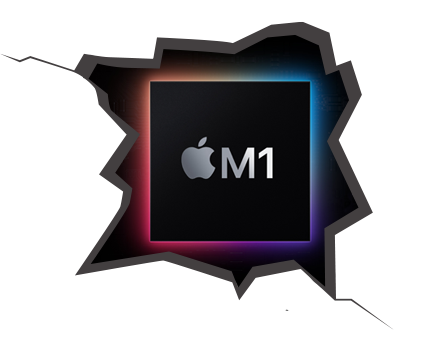
Apple Silicon: Apple is Cool Again
In 2020, Apple finally made the bold move to switch away from Intel CPUs to their own ARM-based System-on-a-Chip (SoC) called the Apple Silicon M1. This move made perfect sense from a computing perspective since SoCs have their CPU, memory, graphics, and other functionality on the same chip to greatly enhance speed and lower power consumption.
Because it uses an efficient and powerful RISC architecture, the M1 performed far better than anyone in the industry had predicted, beating out the performance of nearly all mainstream PC chips from Intel and AMD. Previously disenchanted Mac users flocked back to Apple, and many Windows users bought a Mac for the first time. In short, the move to Apple Silicon brought back Apple’s 2000s reputation as an innovator, and drove high Mac sales for the first time in many years.
What about macOS?
Hardware aside, Mac OS X has seen constant improvements over the years, and was renamed macOS in 2016 (to match the naming convention used for iOS). Following are the different versions, including the code names that they are often called by:
- Mac OS X 10.0: Cheetah - 24 March 2001
- Mac OS X 10.1: Puma - 25 September 2001
- Mac OS X 10.2: Jaguar - 24 August 2002
- Mac OS X 10.3 Panther - 24 October 2003
- Mac OS X 10.4 Tiger - 29 April 2005
- Mac OS X 10.5 Leopard - 26 October 2007
- Mac OS X 10.6 Snow Leopard - 28 August 2009
- Mac OS X 10.7 Lion - 20 July 2011
- Mac OS X 10.8 Mountain Lion - 25 July 2012
- Mac OS X 10.9 Mavericks - 22 October 2013
- Mac OS X 10.10: Yosemite - 16 October 2014
- Mac OS X 10.11: El Capitan - 30 September 2015
- macOS 10.12: Sierra - 20 September 2016
- macOS 10.13: High Sierra - 25 September 2017
- macOS 10.14: Mojave - 24 September 2018
- macOS 10.15: Catalina - 7 October 2019
- macOS 11: Big Sur - November 2020
- macOS 12: Monterey - October 2021
- macOS 13: Ventura - October 2022
- macOS 14: Sonoma - September 2023
Most improvements to macOS since Mavericks have involved adding different tools or window layouts, as well as new security measures to combat the increasing presence of malware on the macOS platform. During 2019, macOS saw a dramatic rise in malware, and macOS 10.15 introduced several desperate (yet inadequate) measures to combat it, including setting core OS files to read-only. Unfortunately, numerous bugs in macOS 10.15 have earned it the title of “the Windows Vista of macOS.” Excellent security posture finally returned to macOS in version 11 (Big Sur), but you could only take full advantage of it if you had Apple Silicon. This is because many security features rely on underlying hardware to implement, and those that Apple desired could only be implemented in their own CPU designs.
Today
Having released additional versions of Apple Silicon (the M2 and M3) with greater features and speed, Apple is still reaping the praise for their switch to Apple Silicon. Additionally, new features in macOS (including Apple Silicon-specific security enhancements) have been lauded by users and professionals alike. However, there is now tremendous pressure from governments and regulators on big tech companies in general. And with Apple being a textbook example of anti-competitive practices, they’re facing a slew of lawsuits that will likely play out for the next decade or longer. It remains to be seen how that will affect public perception of Apple and future Mac products.